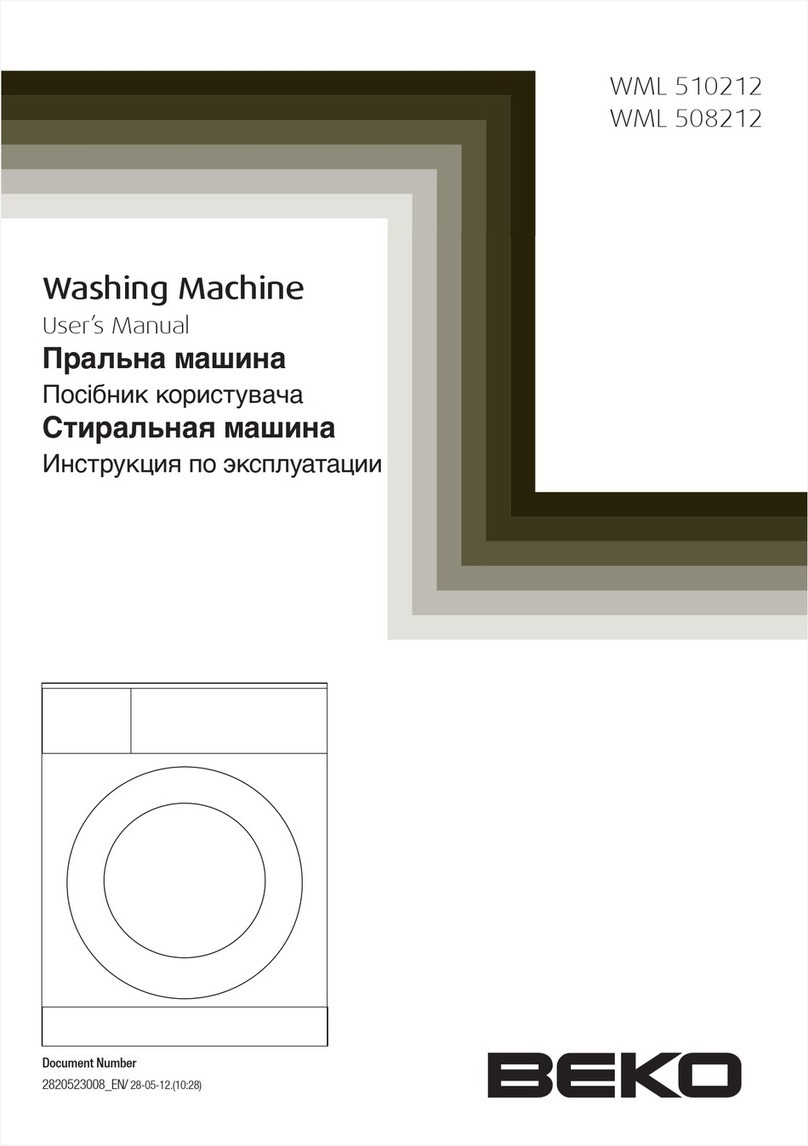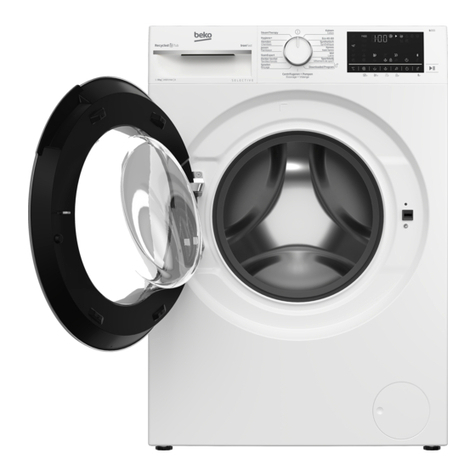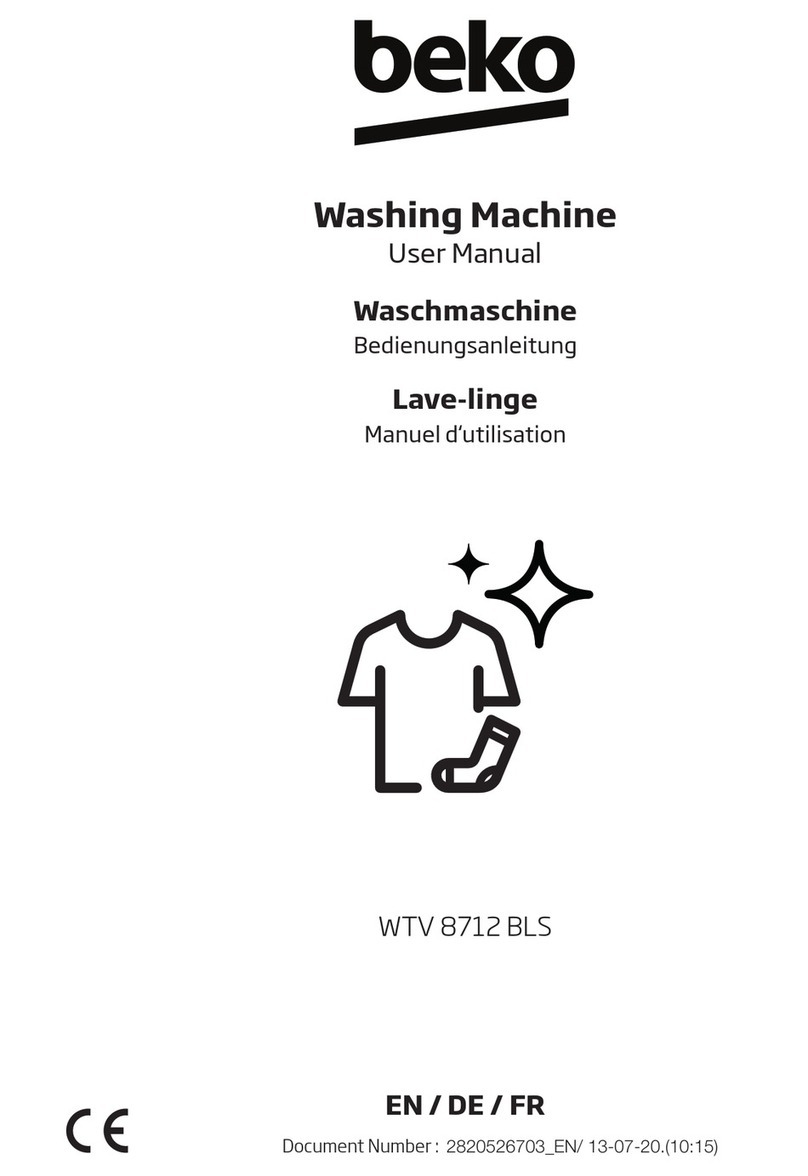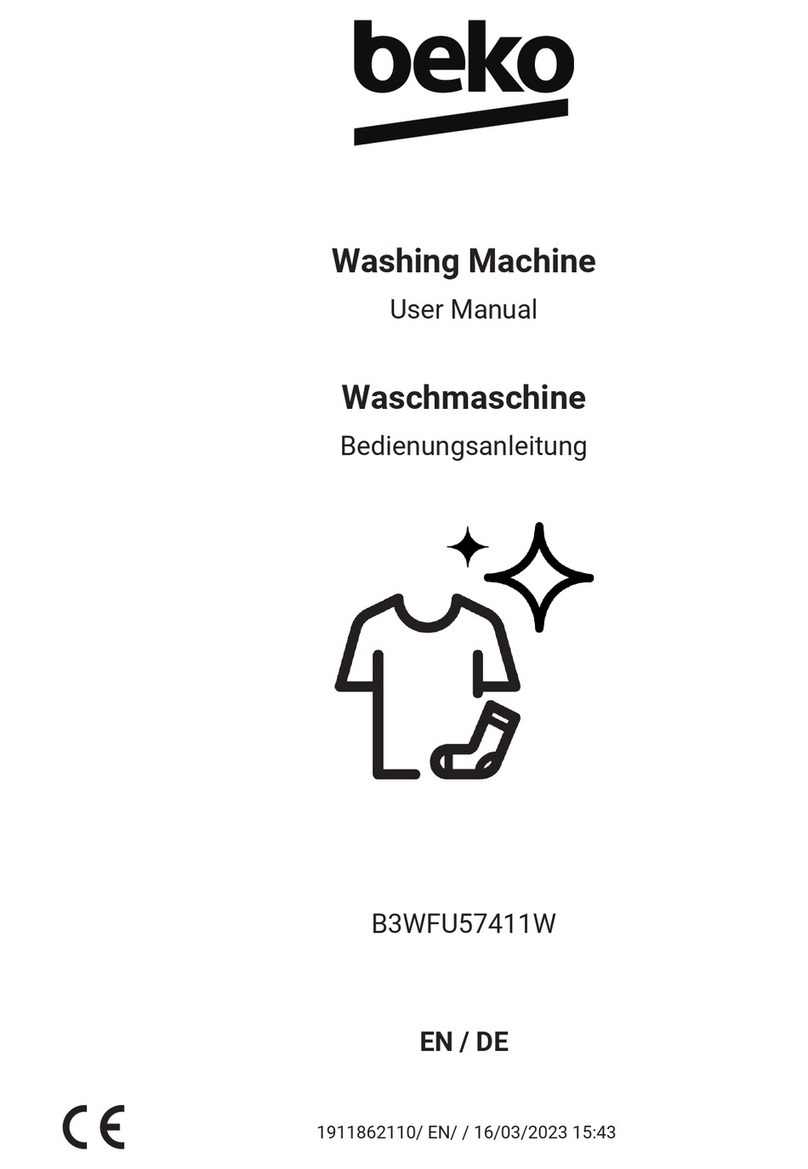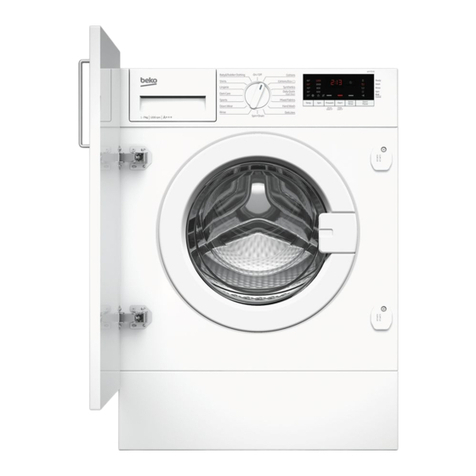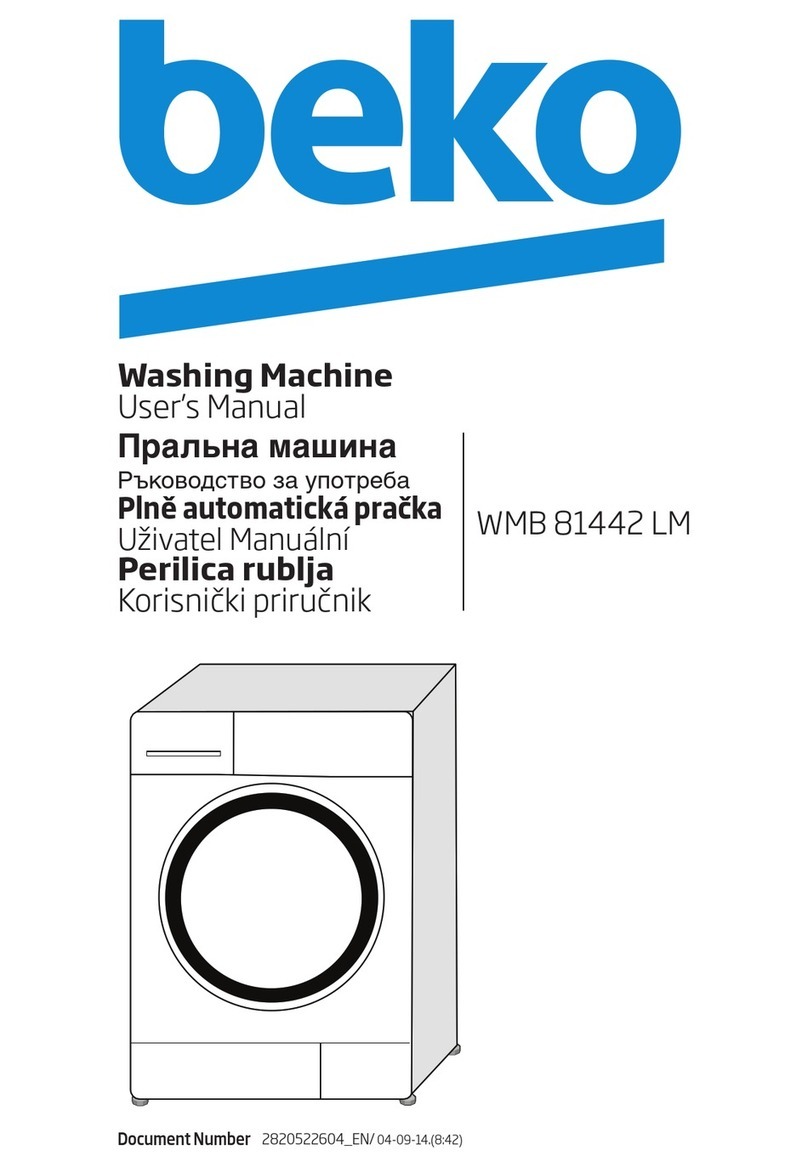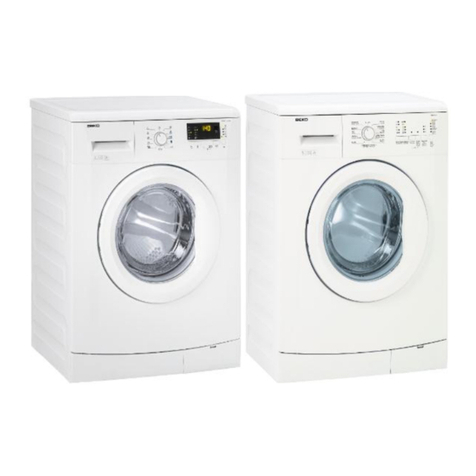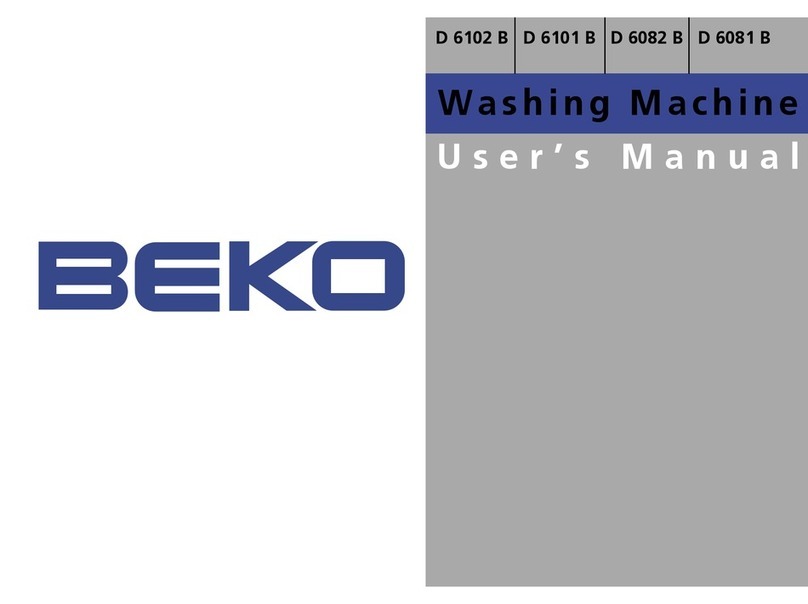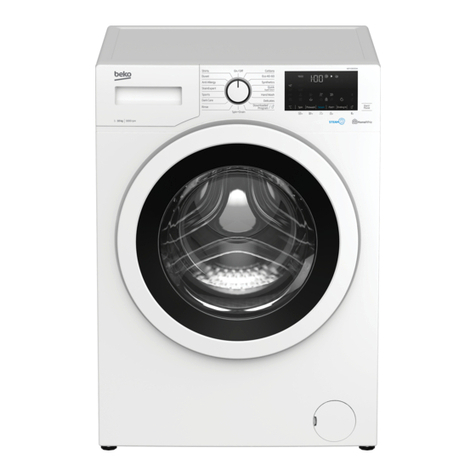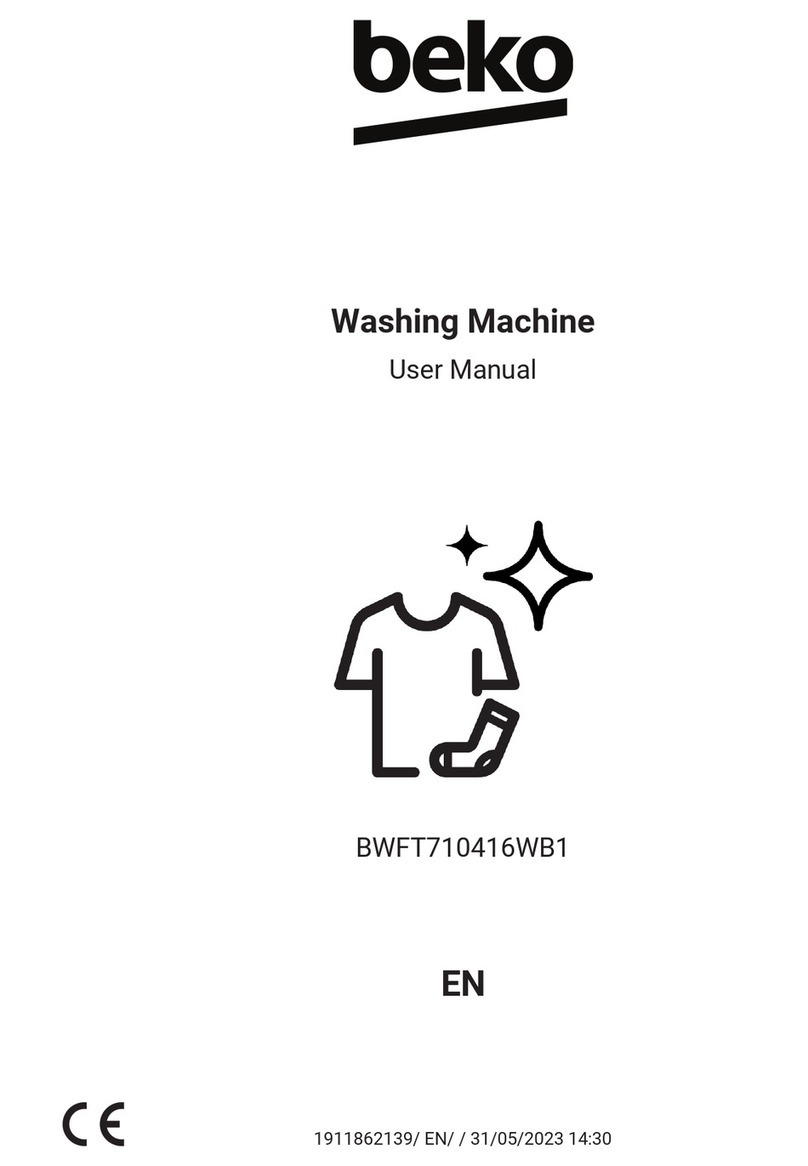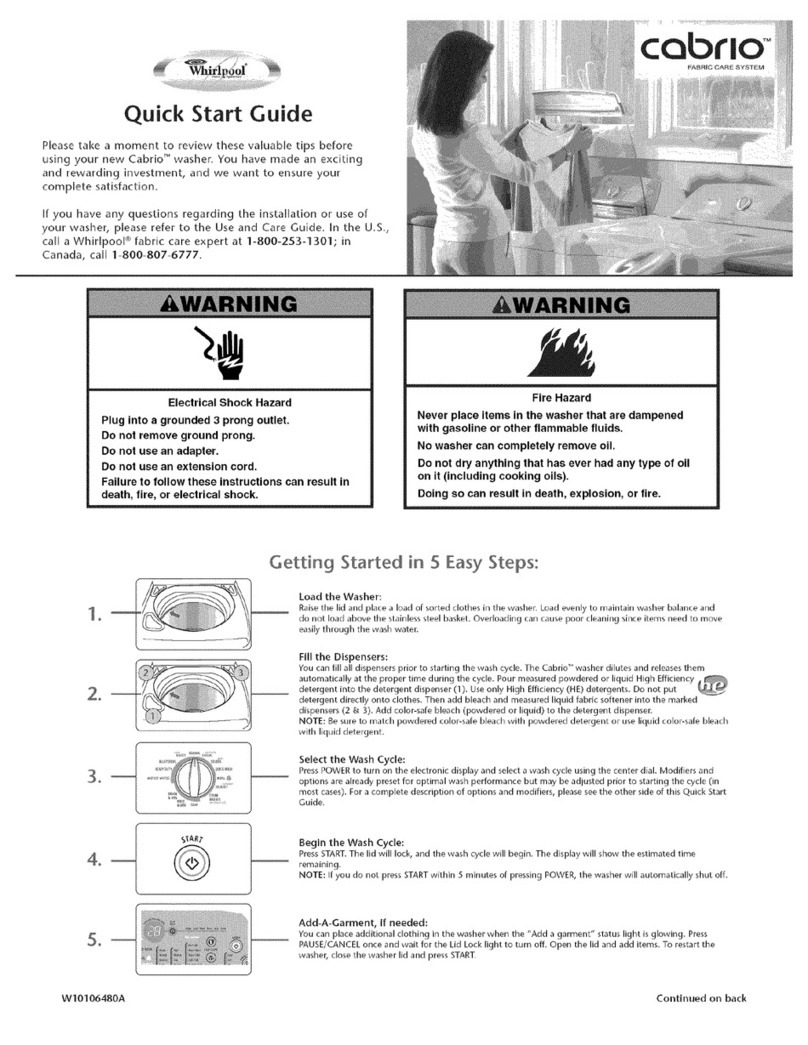
10 / EN
4.2 Preparation
4.2.1 Sortng the laundry
* Sort laundry according to type of fabric, color, and degree of soiling and allowable water
temperature.
* Always obey the instructions given on the garment tags.
4.2.2 Preparng laundry for washng
will damage the machine. Remove the metal pieces or wash the clothes by putting them in a
laundry bag or pillow case.
out and brush. Such objects may damage the product or cause noise problem.
programme.
them separately.
Always follow the instructions on the package.
reduce pilling.
be shaken off before placing into the machine. Such dusts and powders on the laundry may build
up on the inner parts of the machine in time and can cause damage.
4.2.3 Thngs to be done for energy savng
Following information will help you use the product in an ecological and energy-efficient manner.
not overload; see, "Programme and consumption table". See, “Programme and consumption table"
washing process.
4.2.4 Loadng the laundry
1. Open the laundry cover.
2. Put the laundry items into the machine in a loose manner.
3. Push and close the loading cover until you hear the locking sound. Ensure that no items are caught
in the door. The loading door is locked while a programme is running. The door can only be opened
a while after the programme comes to an end.
4.2.5 Correct load capacty
The maximum load capacity depends on the type of laundry, the degree of soiling and the washing
programme desired.
Machine automatically adjusts the water amount according to the weight of the laundry put inside it.
A
WARNING: Follow the information in the “Programme and consumption table”. When overloaded, machine's
washing performance will drop. Moreover, noise and vibration problems may occur.
Washing Machine / User’s Manual





